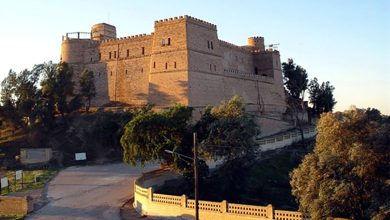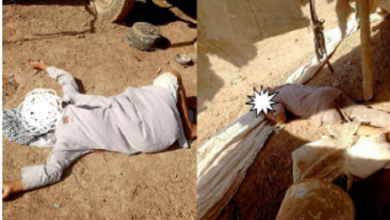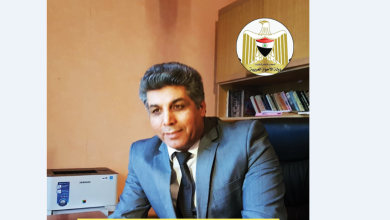Will Iranian repression stop? … Ahwaz between thirst and revolution
The Trends Center for Research and Consultation has issued a research paper entitled: Will Iranian Repression Stop?… Al-Ahwaz, between thirst and revolution, sheds light on developments in the situation in Al-Ahwaz and its political dimensions, and tracks what the thirst protests and Iranian displacement policies could lead to, which were adopted Over the past three decades, and what will be the future of this movement.
Al-Ahwaz is an Arab region, and its people still retain all the national, social and cultural ties that bind it with other Arab countries and peoples. Before its occupation, Al-Ahwaz enjoyed autonomy, and had an emir who was considered one of the most powerful and prominent princes of his era, Sheikh Khazal bin Jaber Al-Kaabi, and His state played a major role in the events that took place in the Arab region in general, and in Iraq and the Gulf region in particular However, the political changes that the world witnessed at the time, including the discovery of oil in Ahwaz in 1908, the outbreak of the Bolshevik Revolution, and the political deals and new geographical divisions of the Arab region that resulted from the First World War, led to the downfall of the Arab region in general. Ahwaz and its annexation to Iran, whose political geography has been reconfigured to be compatible with the new plans necessitated by the interest of the colonial countries, including Great Britain; Accordingly, Reza Shah managed to complete his control of the region and changed its name to Khuzestan, so that between 1928 and 1946, nine failed Ahwaz uprisings demanding freedom and equality erupted.
Al-Ahwaz enjoys great importance as it is the link between Iran and its neighboring Arab countries, as there are no geographical separations between them and the Arab countries. According to surveys, 82% of Ahwazis speak Arabic in their homes.
Ahwaz protests:
Since its occupation, Al-Ahwaz has witnessed protests, revolutions and opposition political manifestations. It has always been an arena of continuous struggle between the Arabs and the Iranian state. Which led to the emergence of a state of intense hostility between the two parties, to the emergence of political oppositions calling for the liberation of Ahwaz to what it was before its invasion by the Iranian army on April 20, 1925. With the outbreak of the spark of recent protests in July 2021, the Iranian authorities deployed large numbers of guards Revolutionary and Basij militia to crush the protests. There is no doubt that the policies of thirst followed by Iran and the diversion of rivers to displace the Ahwazis from their areas and leave their lands, which are followed and systematic policies, so that there is no Arab majority in Ahwaz, and today more than 700 villages and 25 cities in Ahwaz
suffer from thirst, it is not the first drought of Its kind this summer, but the size of the problem and the catastrophic effects resulting from it are increasing year after year, leaving its profound effects on the environment and humans.
The drought destroyed agriculture and the way of life in the region, which was the reason behind the popular movement, while activists believe that water issues are nothing but a spark, and that the main issue is the regime’s policies aimed at displacing people from Al-Ahwaz. In the same sense, the water crisis may be a catalyst for the demonstrations, but its ethno-national identity cannot be denied, as the Ahwazis chanted: “With soul and blood, we will redeem you, Ahwaz.”
The displacement of the Ahwazis is a systematic policy
Iran has worked to weaken the Arab majority in Al-Ahwaz for decades, due to the strategic importance of this region, in addition to the deteriorating living conditions and the high rates of poverty and unemployment in the country.
Javed Rahman “the UN Human Rights Council’s Special Rapporteur on Iran” has pointed to forced evictions in minority areas, including Ahwaz, where the Ahwazis face racial discrimination, and while Iranians occupy high-paying jobs, the Ahwazis are mostly from Blue-collar workers, which was confirmed by Mohsen Haidari, Khamenei’s representative in Ahwaz, that Ahwazis occupy only 5% of the jobs of the Ahwaz provinces in the oil industry.
Ahwaz witnessed many migrations to change the Arab population structure, especially after the establishment of the oil refinery in the city of Abadan, as the largest refinery in the Middle East, in addition to changing the name of the emirate and the names of cities. For example, in 1935, the regime changed the names of major cities such as Muhammarah, Abadan, Al Falahiyah, Khafajia and other areas to Persian, and its security services combated the Arab dress.
The Iranian policy towards Al-Ahwaz during successive governments was characterized by repression in addition to the policies of political and economic exclusion and marginalization, and it worked to establish a group of dams” towards the “Al-Ahwaz” plains, which historically constituted the main tributaries of the region’s rivers; Such as “Karun”, “Karkha”, “Dez”, “Al-Jarrahi”, “Zahra” and other tributaries, with the intention of transferring the waters of these small rivers to the other Persian provinces of “Isfahan”, “Yazd” and “Kerman” ” and “Qom” and others, as Iran is one of the highest countries in the world in water consumption rates, in addition to the high birth rate and uneven demographic distribution within cities. Figures issued by the Iranian Energy Agency indicate that groundwater resources are completely depleted in provinces; Such as Fars, South Khorasan and Isfahan.
The Iranian regime worked to increase the flood crisis that swept the region at the beginning of March 2019 and led to the flooding of 9 cities and 200 villages, the displacement of half a million Ahwaz citizens, and the threat to the lives of nearly a million, as the Revolutionary Guards refrained from diverting the excess water towards the central marshes, fearing that oil facilities and cane farms would be flooded. Sugar affiliated with his companies, in addition, the Revolutionary Guards and the special units of the Iranian Internal Security detonated the earthen berms that the people had built to prevent the flow of water to their areas and agricultural lands.




